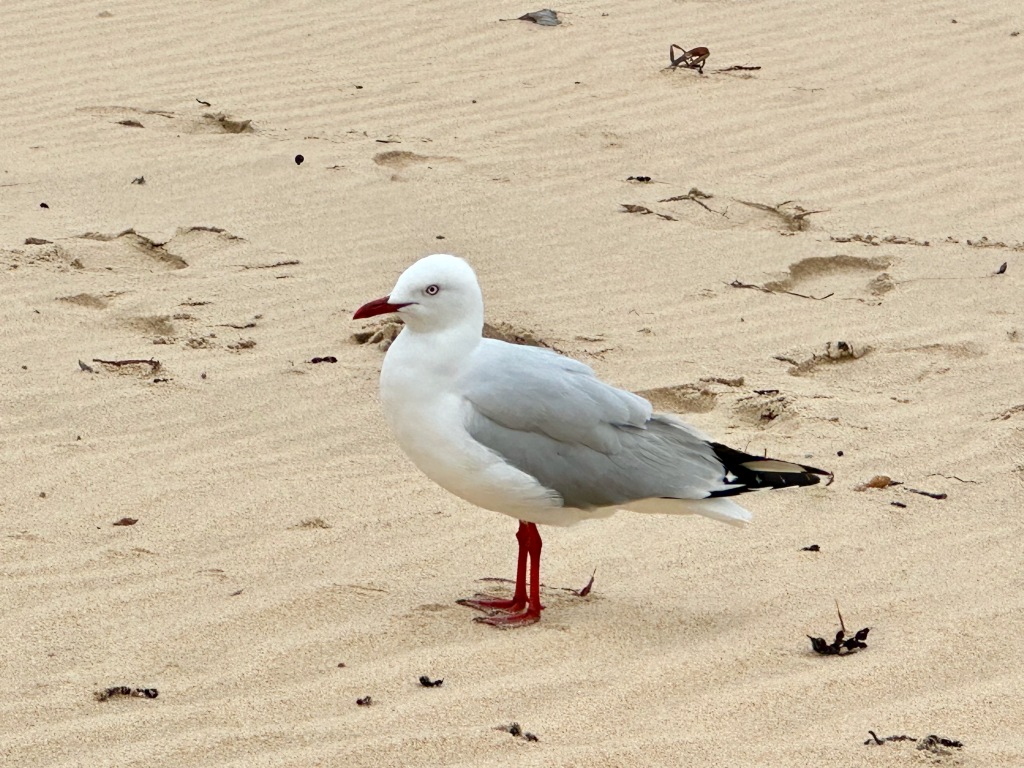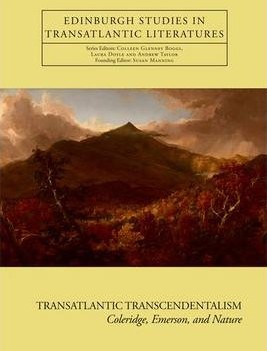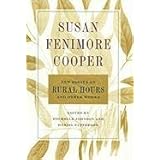I respectfully acknowledge the Yallock-Bulluk people of the Bunurong nation who are the traditional custodians of the Country in which I walked and am writing about here. I pay my respects to their elders past and present, knowing the stories of the Aboriginal people will always be written in this landscape.
I’ve been exploring the shore ecologies of the Bass Coast in Australia, with their vigorous interaction of elements, flora, and fauna. Walking just a few miles along the beach between Harmers Haven and Cutlers Beach was a saturation experience of beach life and geology. There wasn’t another person to be seen, and only the wet sand of the foreshore sported footprints that betrayed the recent presence of a single large dog and its owner. Surf waves broke on a submerged offshore reef, before reaching the shoreline. Along the beach in the opposite direction, wooden and iron remnants of the wreck of a three masted ship, “The Artisan,” which ran aground during a storm in 1901, can still be seen.
This is a place of different, overlapping environments and there’s an urgency to take photos that capture them all, so this post is something of a photo essay. I haven’t attempted to include everything but hope this gives readers a sense of a coastline that is vibrantly alive and threatened by climate change. As a visitor, I’m aware that my own presence is ecologically intrusive and that there’s a need to move with a light footprint. Also, I’m learning about this environment, so welcome comments from readers who know more about it.
Swamp Scrub and Dunes

This post is about a walk I took along the Harmers Haven to Cutlers Beach section of the Yallock-Bulluk National Park and Bunurung Marine National Park. These parks, which aim to provide protection for land and marine ecologies, are named after the indigenous people for whom the area is home. Parks Victoria explains that the naming of Yallock-Bulluk honours the Yallock-Bulluk Clan of the Bunurong Nation: Yallock refers to swamp land and Bulluk means river or creek, which describes natural environments from Tooradin to the Tarwin River. The name was recommended by the Bunurong Land Council Aboriginal Corporation, who are the Registered Aboriginal Party for this Country and the Traditional Owner group legally recognised under the Aboriginal Heritage Act (2006).
My walk began along a narrow footpath through a stretch of coastal swamp scrub that gives way to a coastal dune scrub mosaic. Superb fairywrens, the males unmissable with their electric blue and black plumage, and other small birds that I couldn’t easily identify, love this dense habitat. For more information on superb and other fairywrens, see the Fairywren Project. A Nankeen kestrel watched us from a post demarcating the other side of the scrub from farmland. This dense swathe of coast tea tree (Leptospermum laevigatum) and swamp paperbark (Melaleuca ericifolia) is also home to endangered southern brown bandicoots. A sign informs walkers that predation by foxes and cats is threatening the existence of these small-rabbit-sized marsupials. Classed as endangered and dependent on a habitat of low, dense vegetation, bandicoots are diggers that play an important part in ecological health and sustainability. Together here with echidnas, wombats (I’ve seen several of these latter two, but never a bandicoot) and earthworms, their role in soil perturbation has led to their being called eco-engineers, with one bandicoot able to turn over 3.9 tonnes of earth per year (see Victoria Energy, Environment and Climate Action Conservation program “Protecting the Southern Brown Bandicoot“). This made me think more about an article I’m writing on attitudes towards earthworms in the early nineteenth century. Charles Darwin pioneered recognition of their role in soil health, lecturing on and writing about them in the 1830s and again in the later nineteenth century.

The path scrub path becomes less dense before opening onto dunes and a backshore beach habitat, overlooking the Bass Strait that separates mainland Australia and Tasmania. Native coastal grasses and plants, including tough hairy spinifex, coast everlasting (Ozathamnus turbinatus), and pigface (Carpobrotus glaucescens) thrive in the salty winds, maintaining the stability of this windblown environment. Other grasses and sand-loving plants are too many to list here, and spinifex dominates, so if you’re interested I suggest sites including those provided by the Bass Coast Shire Council and, for threatened species and communities, the Victoria Government’s list according to the Flora and Fauna Guarantee Act 1988.


Where the dunes meet the beach, critically endangered Hooded plovers nest on the open sand. With an estimated 750 individuals remaining in Victoria, up from 400 between 1990 and 2000, and just 1664 in Australia and New Zealand (figures from 2022. See the Great Ocean Road Coast and Parks Authority page), the “hoodie” is vulnerable to habitat loss, predation, and to accidental disturbance (such as their nests being trodden on), which are likely eventually to result in its extinction. Yet a pair were not difficult to spot and didn’t seem all that much disturbed by our passing by them at a moderate distance.

Taken by my husband with zoom lens to preserve distance. Photo © Susan Oliver
I wonder if the two species of gull that I see are a problem for hoodies? I was able to take photos of a silver gull on the backshore sand and a Pacific gull at the water’s edge running into flight with a large mollusc in its oversized yellow, red-tipped beak.



Gulls have a bad press, but these really are beautiful. Other birds seen on the walk include a large black oystercatcher fishing in rock pools, a lone white-faced heron likewise looking for food, and several black and pied cormorants hunched in spray on rocks near the shoreline, looking like shipwrecked mariners. It’s easy to understand how cormorants have acquired gothic significance in folklore, their shiny plumage and posture suggesting oilskins and sou’westers. I’m reminded of the Scottish story of the disappeared Flannan Isle Lighthouse keepers in the Outer Hebrides in 1900, adapted by Peter Maxwell Davies in his 1979 thriller chamber opera The Lighthouse and more recently in the 2019 film The Vanishing. A tender (supplies) ship arriving at the David Stevenson-designed lighthouse found the three keepers gone without trace, while three large cormorants watched the search from a rock. Towards the end of my walk, a soaring, black-shouldered Kite hunting over the swamp scrub brought to mind a different literary episode — the encounter with an airborne merlin in Henry David Thoreau’s Walden:
It was the most ethereal flight I had ever witnessed. It did not simply flutter like a butterfly, nor soar like the larger hawks, but it sported with proud reliance in the fields of air. . . . It appeared to have no companion in the universe, —sporting there alone, —and to need none but the morning and the ether with which it played. It was not lonely but made all the earth lonely beneath it.
Foreshore rock pools
The tide was ebbing throughout my walk, with rock pools revealing wild gardens of algae, corallines, sea anemones and molluscs. Common limpets, barnacles and tightly packed colonies of tiny mussels covered the rocks. Seaweed and other algae in rock pools play a crucial role in nutrient cycling as well as providing a habitat for small marine organisms. The common species here include Golden kelp (Ecklonia radiata), crayweed (Phyllospora comosa), red algae or seaweeds; in particular Plocamium angustum and dilatum and Phacelocarpus peperocarpos, and the gorgeously named Neptune’s necklace (Hormosira banksia). There’s a lot of red and some yellow coralline growing on the rocks, too. Corallines are among the least obvious algae living in this vivid environment because of their low-level growth, yet they are as compellingly interesting as they are integral to the ecology and food chain. While writing a recent article on historical ecologies of the Bass Rock – 17000 kilometres as the crow flies from this beach, off the Lothian Coast of Scotland – I was captivated by attention to them and to seaweed algae that thrive in the extreme ecosystem of the intertidal zone. Natural historian, Regius Professor of Natural Science, Minister in the Church of Scotland, and a founder of the Royal Society of Edinburgh, John Walker – an important contributor to the Scottish Enlightenment – wrote in 1808:
Upon the recess of the tide, we found growing on the rocks of the Basse, a very beautiful species of fucus, which we never had formerly observed. . . . At a very low ebb, I found above the surface of the water, growing three or four species of corallines. . . some of them were above three hours out of the water.
Walker regretted that he didn’t have the equipment – presumably a microscope – that would have enabled him to study the corallines, but he commended the Bass to others:
To those, however, who wish for such an opportunity, this may serve as a direction to the most favourable place that can be desired, for making observation upon these extraordinary productions.
Walker, as above.
See also:
1. “A Coastal Knowledge Ecology and an Aesthetics of Data: Environmental Science, J. M. W. Turner, and the Bass Rock,” Romanticism on the Net, 79, Susan Oliver (publication due Dec 2023)
2. “Scotland’s Coastal Romanticisms,” (forthcoming December 2023) and “‘Better Lore’ of the Romantic Coast: Maritime Ecologies and Cultural Infrastructure from England, Scotland, and Beyond“, European Romantic Review 34:3 (2023), pp. 303-315. Sam Baker, Alex Dick, Eric Gidal, Gerard McKeever and. Susan Oliver.


Molluscs in addition to those I’ve already mentioned include small black nerites (Nerita atramentosa) and larger common warreners (Turbo undulata)– both grazing organisms – blue and (I think other) periwinkles, striped-mouth conniwinks (Bembicium nano) – also grazers – and tiny false limpets (Siphonariidae) that, unlike true limpets that have gills, breathe air and can only live in the intertidal zone. I saw a chiton, sometimes called by its common name “sea mouse,” and named after the garment worn by the Greek goddess Aphrodite, nestled in a rock crevice, and some deep red Waratah anemones on the sides of pools, their tentacles retracted. It’s good to see the black nerites on the rocks, as they are a sentinel species for monitoring changes in ocean acidification that weakens the calcium carbonate content of their shells, making them more vulnerable to disease and predation, as well as impacting reproduction rates. There were quite a few here. In my photo (above) of a pair of hooded plovers, you can see several at the waterline. A single large whelk attached to another rock was the only live example that I saw of that predatory species, although there were empty shells left by the tide.


For another post
I’ll write another post about the sedimentary rocks along the shoreline between Harmers Haven and Cutlers Beach. Grey, flat, striated and showing sections of fossilized wood (this was a coal mining area), they reveal the deep time history of the area. Coal is visible in the rocks and washed ashore. Wonthaggi has been a coal mining town and Harmers Haven grew as a hamlet where mining and other working families settled by the ocean.
I didn’t see any rock pool fish on this walk, but while snorkelling in the following days saw several species that are part of this fragile biotic community, including strikingly patterned zebra fish, the lovely and badly named common weedfish (Heteroclinus perspicillatus) that seemed not too troubled by my presence and swam alongside me, mullet, and what I think were rough bullseye (Pempheris klunzingeri). They’re also for a new post.











